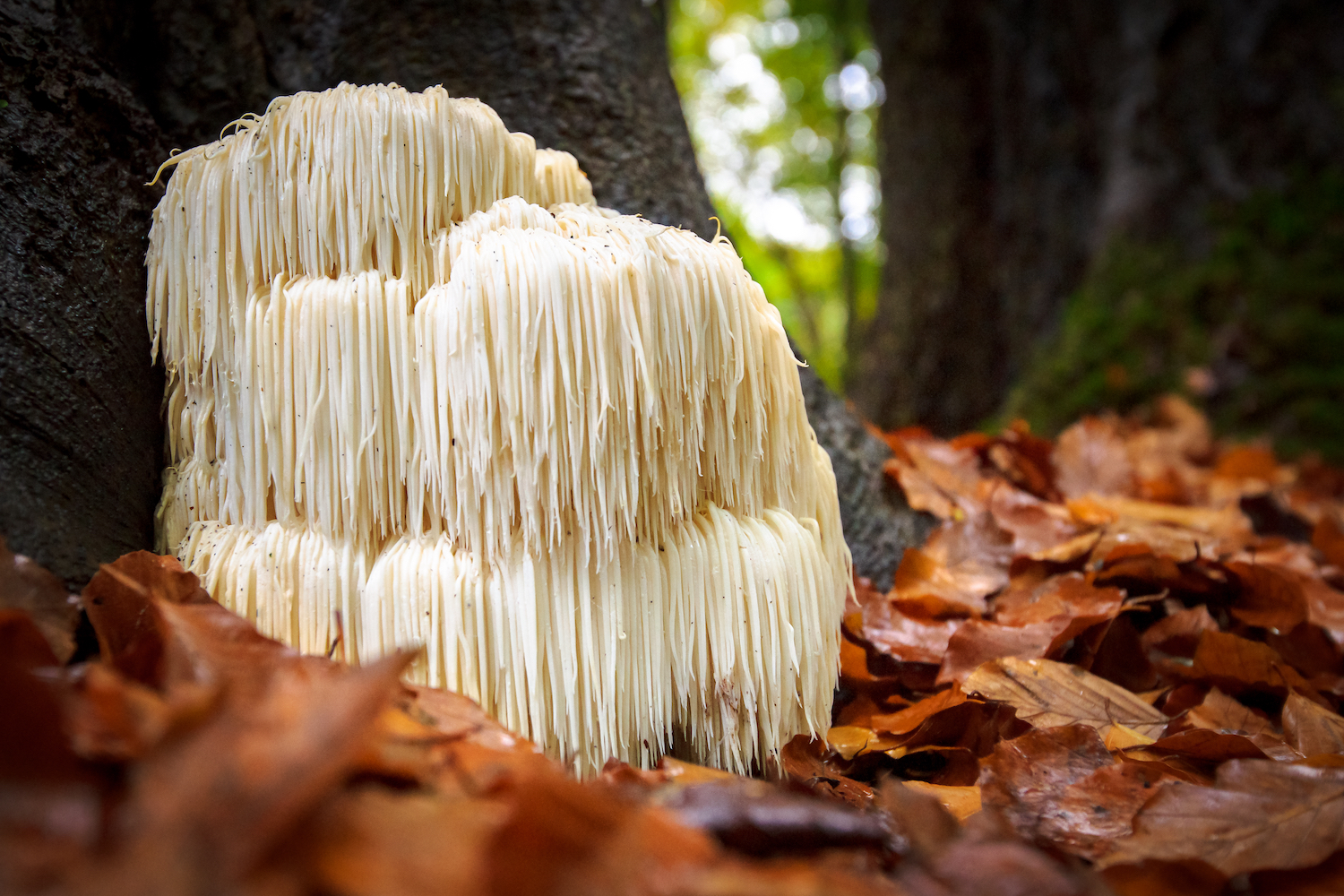What is Lion's Mane?
Both a delicious edible and incredible medicine, lion’s mane mushroom (Heiricium erinaceus), when mature, is a fleshy, semi-spherical whitish fruiting body.
It is composed of a mass of unbranched icicle-looking spines hanging from a cushiony base that attaches to recently fallen logs or injured tissue of living hardwoods.
Native to Europe, it is widely distributed throughout woodlands of North America.
When fresh, the spines are white and highly edible, though the base is too tough to be eaten.
As this mushroom ages, the color turns to yellowish to brown, at which time its delectability declines.
Lion's Mane for Brain Health
Medicinal mushrooms, such as reishi, shiitake, and lion’s mane, are among the most important supplements we can use for overall health. They share properties and chemistry that are similar, but each has its unique signature.
The unique signature of lion’s mane is its incredible potential for healing nerve tissue. Clinical and preclinical investigations show it to be uniquely beneficial in the prevention and treatment of cognitive decline, such as Alzheimer’s disease, due to its ability to both protect and regenerate nerve tissue.
Lion’s Mane Chemistry
-
Beta Glucan-Type Polysaccharides
Like most medicinal mushrooms, lion’s mane consists of an array of beta glucan-type polysaccharides, often touted as the active constituents of medicinal mushrooms.
-
Diterpenoids: Erinacines and Hericenones
Of special interest that gives lion’s mane its unique standing is a collection of diterpenoids know as erinacines and phenolic compounds known as hericenones. Both have the ability to promote the synthesis of nerve growth factor, a neuropeptide involved in the regulation of growth, maintenance, proliferation, and survival of neurons.
-
Other Components
Additionally, lion’s mane contains:
- organic acids
- nucleotides
- amino acids
- carbohydrates
- flavonoids
- unsaturated fatty acids
- terpenoids
- phenolic acids
- phenylpropanoids
- steroids
Lion's Mane for Neurodegenerative Diseases
In animals that received erinacine A in daily meals, improvements in neurodegenerative diseases such as ischemic stroke, Parkinson’s disease, and Alzheimer’s disease were seen. Also observed were decreases in amyloid plaque, a characteristic feature of AD.
The same compound increased the survival of newly formed neurons in the hippocampus, suggesting general benefit, not just benefit for those with diseased brains.
Subsequently, an erinacine A-enriched lion’s mane mycelium preparation was given to patients with mild AD. Improvements were recorded using a variety of dementia assessment ratings.
Other markers associated with cognitive decline showed marked improvement, including increases in neurotropic factor in the brain and reductions in amyloid plaque and apolipoprotein E4 levels, the latter being the primary known genetic risk factor for AD.
Part of this activity is associated with a direct effect on regenerating nerve tissue but also in reducing inflammatory cytokines, which are compounds that can wreak havoc on nerve tissue (think “cytokine storm,” as seen in severe cases of COVID-19).
Other Neurological Disorders
In addition to lion’s mane potential for reducing the incidence and severity of AD and dementia, it similarly shows benefit in other neurological disorders, including:
- protecting against age-related hearing loss
- decreasing brain lesions in Parkinson’s disease
- supporting healthy myelination of nerve tissue
Myelin is a fatty substance that serves as insulation around nerve tissues, thereby improving nerve transmission and factors in conditions such as:
- multiple sclerosis
- Guillain-Barre syndrome
- peripheral nerve damage
Other Benefits of Lion's Mane
-
Diabetes Control
While the cognitive benefits of lion’s mane have been determined in human clinical and animal trials, a number of other benefits have been investigated in preclinical studies.
When administered as a part of the diet, lion’s mane inhibited the wasting that occurs in advanced diabetes, improved fasting blood sugar levels, reduced glucose tolerance, improved liver function and lipid metabolism, and reduced oxidative stress, which is prevalent in diabetes.
Polysaccharides were found to be at least partially responsible for these activities.
-
Immunity
A number of studies report a host of mechanisms by which lion’s mane supports health in general and healthy immunity specifically.
In one study, compounds hericerin A and hericerin inhibited the growth of leukemia cells, while another showed that lion’s mane polysaccharides activate macrophage immune response, which suggests its potential as a preventive in respiratory infections.
-
Gut Health
Other studies show that lion’s mane improves the health of the intestinal microbiome with potential benefit in colitis, healing of the mucosal lining in the intestines, and even the potential to break down wheat.





